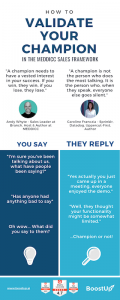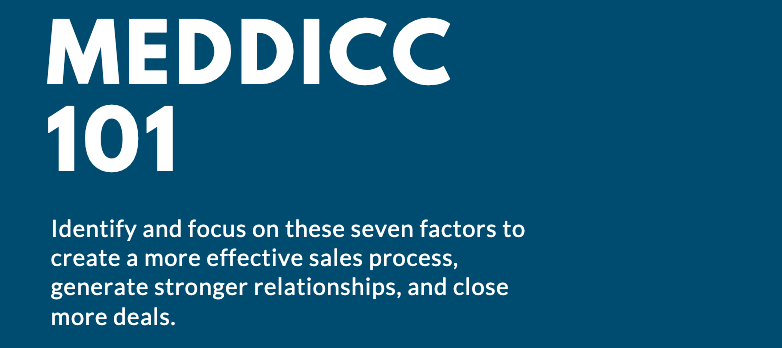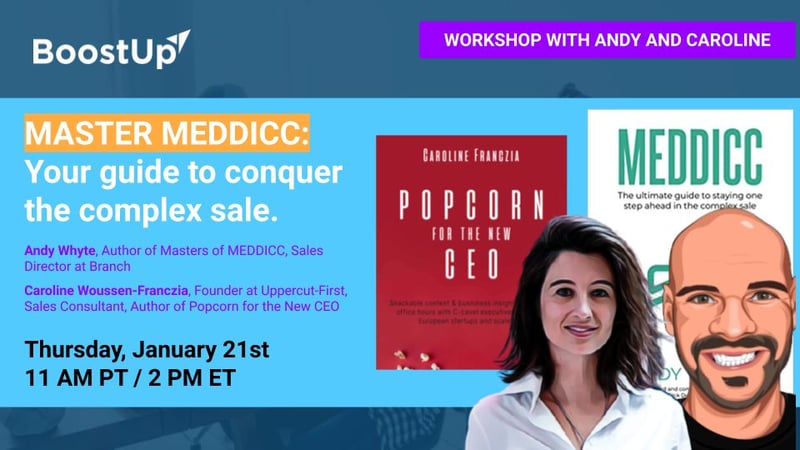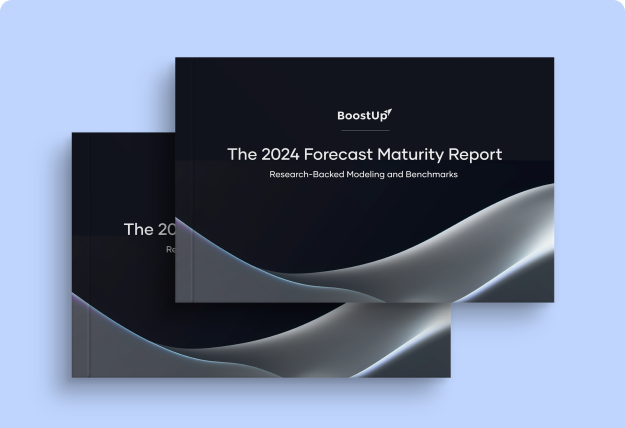The Revenue Blog /
What is the MEDDICC Framework? Everything You Need to Know.
What is the MEDDICC Framework? Everything You Need to Know.

Topics covered in this article
MEDDICC: The foundation, the details, the value.
We recently had the privilege of welcoming Caroline Franczia, Founder at Uppercut-First, Sales Consultant and author of “Popcorn for the New CEO,” and Andy Whyte, Sales Director at Branch (BoostUp customer) and author of “Masters of MEDDICC” to the BoostUp stage. They shared their unique perspectives on the MEDDICC sales process with our CEO Sharad Verma.
Here are some of the things we learned:
What exactly is MEDDICC?
When it comes to MEDDICC, the worst thing you can do is try to pin it in a specific category. The simplest definition is that it is a qualification framework that serves as a foundation for any sales process or methodology. In fact, Andy likens MEDDICC to an operating system for sales, that all the other processes run on top of.
The magic of MEDDICC is that it does not have to replace a sales process like Challenger, NEAT, or BANT, and neither does it undo any specific qualifications like company size, software ecosystem, or the number of users.
Rather, MEDDICC functions as the foundation for any existing processes you may have in place. It helps teams qualify deals by standardizing the actions taken against them and serves as a framework that makes deals highly likely to be successful when followed.
MEDDICC stands for:
- Metrics
- Economic Buyer
- Decision Criteria
- Decision Process
- Implicate the Pain
- Champion
- Competition
With the competition being optional and the ability to add a “P” for Process.
Is it MEDDICC, MEDDIC, or MEDDPIC?
The reality is, there is not one precise name for it. Each letter for MEDDICC stands for a component within its framework. Therefore, what you call it depends on what version you choose to use with your team.
So what version is best? That also depends on your specific use case. If you choose to specifically call out competition within a deal, then MEDDICC is right for you, if you want to ensure there is a paper or documentation process, use MEDDPIC, if you want both, go with MEDDPICC.
What is MEDDICC’s Role in Sales Today?
As more and more companies come to the realization that customers need just as much (if not more) attention than prospects, organizations have shifted to more integrated strategies that unite sales, marketing, and customer success.
Some of these companies have gone as far as to install revenue operations teams to help coordinate relationships and disseminate data. In contrast, others are simply trying to get these teams to talk more. MEDDICC, when aligned with RevOps, gives teams a way to discuss deals across departments.
MEDDICC is a framework that naturally stretches beyond sales. As Caroline says, “It creates a common language throughout the company.” MEDDICC provides a method of discussion that sales, marketing, and customer success can all relate to.
Andy likens MEDDICC to a gift from the sales team to the customer success group. He says, “You hand them, gift wrapped with a bow on top. It’s the MEDDICC from a deal. Here’s the KPIs that they are going to measure success by, the economic buyer that will sign off on the renewal, here’s how and why they made the decision, here’s the pain we’re going to solve for them, and here’s the champion that you need to keep in touch with.”
MEDDICC is Universal.
While it was originally developed at a large corporation, MEDDICC is highly effective for anyone that deals with B2B sales that involve more than a simple transaction.
“MEDDICC is universal and scalable. I’ve worked at organizations without MEDDICC where I’ve used it personally, and I’ve worked at organizations that have had it full scale.” Says Andy.
While the framework will work great for a single sales rep, an individual user will miss out on one of the most considerable benefits of MEDDICC, which is the common basis for communication and discussion around deals. However, you do not have to be in a particular industry or company for MEDDICC to work for you. It is effective in any industry, vertical, company size, or sales method.
How to Drive Adoption of MEDDICC.
MEDDICC requires a top-down approach for proper implementation and adoption on a larger scale. When it comes to creating buy-in, it’s essential to showcase the value and power of using the framework. Fortunately, with MEDDICC, that’s easy.
Caroline suggests creating dashboards for leadership and managers based on the MEDDICC framework. This way, they can know at a glance where certain deals stand and use that information to make predictions of how they will perform against their forecasts.
For reps, she says show reps how it gets them to what they most. That is, they usually want big commissions and recognition. To get those things, a deal needs stakeholders, pain with a business impact, a known decision process, and a timeline. MEDDICC is the framework that can track and manage all of those factors.
When starting to use MEDDICC, Caroline adds that it’s important to not focus on its components. Rather, form discussions around what’s missing and ensure that everyone can have an open and honest conversation about finding solutions.
What’s the Difference Between Champion and an Economic Buyer?
MEDDICC includes two components that require the identification of particular contacts in a deal. Namely, a Champion and an Economic Buyer. What’s the difference exactly?
A Champion is an individual in the organization who has a personal pain that must be fixed, or a personal gain from acquiring your solution. They should have power and influence, or access to power and influence. Caroline adds that “How I identify a champion is not the person who does the most talking, but the person who when they talk, everyone else remains silent.”
The Economic Buyer is the person who has the ability and the budget to make the purchase decision. They may not be the person pushing for your product or solution but are the ones that must be influenced by your Champion.
See how to validate your champions with this infographic.

Why Sales Reps Need to Qualify Out of Deals.
Andy shared his new term, “Qualify-out,” and why sales reps need to do it more often. MEDDICC makes it (sometimes painfully) obvious what direction a deal is going. Rather than ride it out, Andy suggests that if you feel it is going south, to openly share that with your prospects.
This has two benefits. Firstly, he says you are instantly free to focus on other deals that you can (and will) close. Second, he suggests approaching your contact and something like, “I’m going to qualify out of this deal because I don’t think our solution is right for you.” When you say this, your contact may say, “Yes, you’re right.” Or they will say, “Wait! We really like your solution, sorry we were coming across as uninterested.”
Therefore qualifying out of a deal, really is a win-win for reps.
Tools that Facilitate MEDDICC.
As with most things in sales, there are tools to help facilitate the MEDDICC process. Platforms like BoostUp provide sales teams with a way to map out the sales process so reps can provide accurate information as they progress through it.
Then, managers and leaders can actually analyze the usage of the sales process and get real-time visibility into deal progression and process compliance. Better yet, reps can update these fields in just a few clicks, so they can follow a process without disrupting their workflow.





-Photoroom.png)